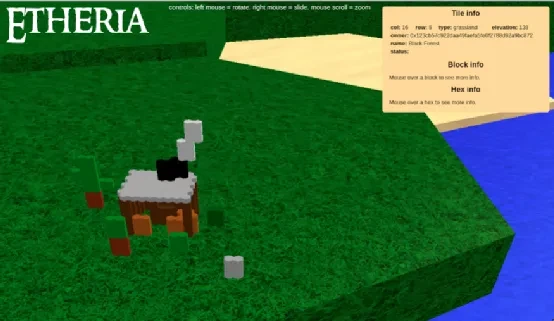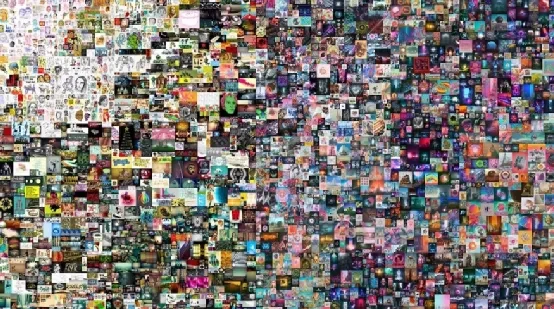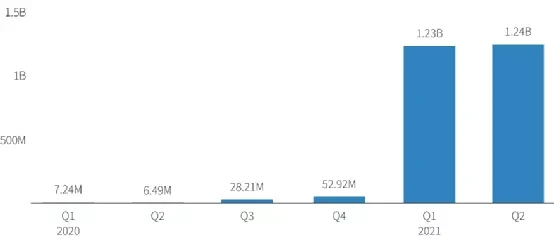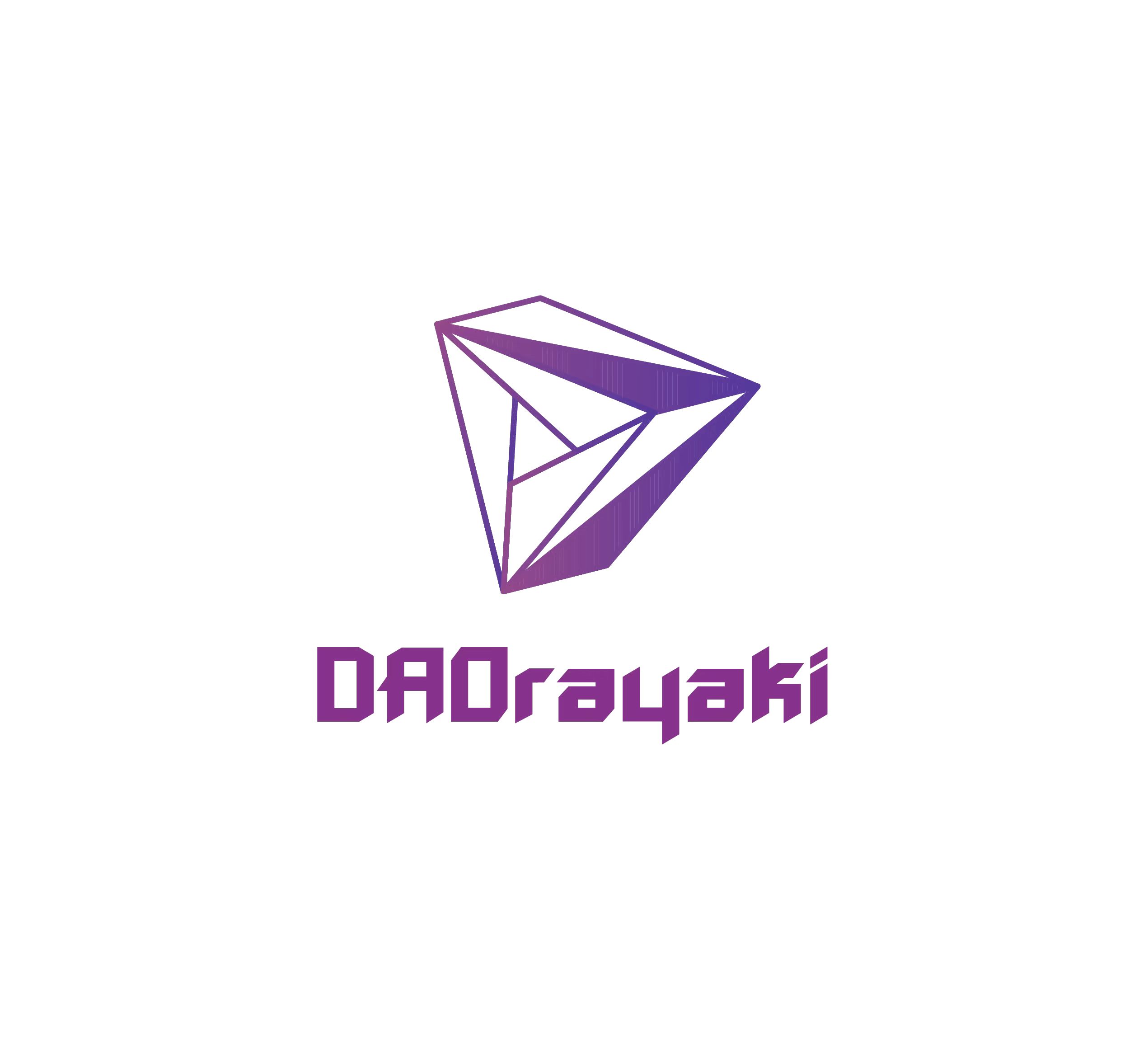DAOrayaki DAO Research Bonus Pool:
Funding address:
0xCd7da526f5C943126fa9E6f63b7774fA89E88d71
Voting progress: DAO Committee 3/7 passed
Total bounty: 120USDC
DAOrayaki DAO Research Bonus Pool:
Voting progress: DAO Committee 3/7 passed
Contributors: Natalie, DAOctor @DAOrayaki
Types of research: DAO, NFT, Art
NFT?
Original Author: Sasha Shilina
Contributors: Natalie, DAOctor @DAOrayaki
Original: The NFTs ecosystem: 2021 boom beyond

A token as a unit of account is an account in a distributed blockchain controlled by a computer algorithm of smart contracts, which records the value of the balance on the account of the token holder, allowing them to be transferred from one wallet to another. another.
standard
Non-fungible/non-fungible tokens (NFTs) are encrypted tokens that represent digital files, images, audio, video, video game collectibles, and other creative products. Unlike cryptocurrencies, which require all tokens to be the same, each NFT is unique or limited.
For simplicity, in each blockchain, all tokens are equal and fungible (e.g. all bitcoins are the same, one bitcoin can be exchanged for another and nothing changes) . Among them, due to the emergence of NFT, each token cannot be counterfeited, split or replaced. This technology is ideal for protecting the rights to unique things, be it works of art, virtual objects for computer games, or even real estate.
secondary title
standard
ERC-721 is the first standard for representing non-fungible digital assets on the Ethereum blockchain. The ERC-1155 standard provides semi-fungibility and also provides an extended set of ERC-721 functions (thus, ERC-721 can be built using ERC-1155).
Unlike ERC-721, which uses a unique identifier to represent an asset, the unique identifier of an ERC-1155 token represents an entire class of fungible assets, and users can transfer any amount of assets to others.
secondary title
Summarize:
Advantages and disadvantages
The main benefits of NFTs are closely related to everything that distributed ledger technology (DLT) has provided in recent years. The blockchain technically ensures the authenticity of the NFT and guarantees payment directly to the content creator.
secondary title
Summarize:
innovative enterprise
Innovative Enterprise + Blockchain
Digital Terms and Copy are the same
Digital terms, NFTs are unique
Ownership records for digital items are stored on servers controlled by a central authority
Ownership records are stored on the blockchain, each non-functional test has an owner, and this is a public record
The platform retains most of the sales profits
Artists can claim royalties directly
Artists are dependent on infrastructure and limited by the geographic distribution of the platforms they use
Artists have access to global markets
However, despite the obvious advantages of NFT solutions, it is difficult not to pay attention to several problems that have formed in the industry at the same time as their emergence.
Analysts at Sotheby’s highlighted the following technical flaws related to the rapid proliferation of NFTs and crypto art:
· It is difficult to find the original owner of the NFT.
history
With regard to NFT sales, the issue of copyright protection has come up more and more frequently. When uploading content to open a non-curated NFT platform, you cant stop being curious about the fact that it can sell any media file on your behalf, whether its a selfie you took a few seconds ago or a picture you found on the internet. ). Many scammers take advantage of this. A case in point is the recent incident with the NFT painting of Jean-Michel Basquiat, which was auctioned in April 2021, after the platform discovered that the seller did not own it two days later. to remove it.
All these problems still exist. Researchers and engineers have yet to find a solution.
secondary title
history

The prototype of NFT is Colored coins, an experimental asset created on the Bitcoin network in 2012. The illustration of the Pepe the Frog character was also one of the first non-fungible Bitcoin tokens. Many of them were sold on eBay, and rare pieces from the Rare Pepes collection were later auctioned off in New York.
The pioneer of Ethereum-based NFTs is the CryptoPunks project. The collection contains 10,000 pixelated punk images, each with a unique set of characteristics. The barrier to interacting with NFTs is significantly lowered for every punk purchased using popular wallets such as MetaMask. Oddly enough, CryptoPunks do not conform to the ERC721 standard as it has not yet been invented and represents a hybrid of ERC721 and ERC20. Today, CryptoPunks might be considered a mainstream digital antique, given their limited supply and established brand image in the crypto community.
It’s worth mentioning that the question of CryptoPunks’ primacy is still open, as in 2015, two years before the project appeared on Ethereum, someone created the Etheria game, in which users buy NFTs of hexagonal plots of virtual land.
In late 2017, the online game CryptoKitties, which allows users to breed digital cats, gained notable acceptance, opening the way for mass adoption. The game runs on five Ethereum smart contracts, which users can easily interact with through their Ethereum addresses. The game is very intuitive, very simple, and very popular, accounting for around 25% of the entire Ethereum network traffic shortly after launch. The project quickly raised $12.5 million in investment, and some kittens have sold for more than $100,000 due to the hype.
CryptoKitties became an example of the first large-scale non-financial application being deployed on top of a blockchain. At that moment, the crypto community realized the potential of NFTs and their supply increased significantly. After the excitement over CryptoKitties ended, the audience for existing projects grew, with over 100 NFT projects appearing in the following years (2018 and 2019). The NFT landscape began to develop with unprecedented enthusiasm, so much so that even the Cryptotitties project appeared.
secondary title
2021: Part 1
In 2021, the NFT ecosystem continues to grow at an unprecedented rate. According to NonFungible.coms NFT industry statistics report, the NFT market exceeded US$250 million in early 2020, an increase of nearly 300% from the previous 2019. In addition to this, within a few months, cryptocurrency investors have poured $90 million into NFTs and digital collectibles, resulting in a 1785% increase in the overall market value of the digital market, from $23 million at the beginning of 2021 to 3 million. $432 million at the end of the month.
Of all NFT segments, virtual worlds and artwork account for the majority. Still, computer games lead in terms of number of transactions (nearly 50% of NFT transactions in 2020 were related to them), and collectibles are not far behind.
The most commonly used NFT market is a common OpenSea platform that allows users to mint and trade NFTs, including ERC721 and ERC1155 standards, their data can be found from the web page and statistics can be checked. Created in 2017, today, it offers over 300 types of assets and over 10,000,000 minted tokens. Almost all crypto collections are available to users, including CryptoPunks and Hashmasks, as well as items from many popular blockchain games such as SoRare, CryptoKitties, Axie Infinity, Gods Unchained, and many more. In June 2021, OpenSea sales hit an all-time high of approximately $150 million.
Another popular marketplace for buying, selling, and creating NFTs is Mintbase, which excels at covering niche NFT categories like music, photography, and news.

The Rarible and Zora platforms have achieved great success among fans of crypto art and the artists themselves because they are not curated. To upload art-NFTs onto them, users only need to register and pay transaction fees to mint tokens. Unlike them, on curated services like SuperRare, Nifty Gateway, MakersPlace or Known Origin, to start selling digital artwork, content creators need to submit an application form, which has fairly strict selection criteria and a long wait for an expert time to decide, which often scares away NFT creators.
In addition to this, many works of digital art have been placed in online collections in virtual worlds.
Cryptovoxels is the first blockchain-based virtual world with multiple art galleries where users can purchase artwork in the form of NFTs. As virtual reality spaces become more popular, exhibiting digital art within them is becoming more common and exciting for the crypto community.
“Everydays: The First 5000 Days” is a digital image in JPEG format with a resolution of 21069 × 21069 pixels and is a collage of images from the “Everydays” series by American artist Mike Winkelmann (Beeple).
The most notable event was the auction of Beeples work Every Day: The First 5,000 Days, the first NFT artwork to be auctioned at the prestigious Christies. It sold for $69.3 million, making this NFT created by Winkelmann the most expensive NFT in the entire history of crypto art.
Following the record-setting sale of Beeple pieces, the auction house announced that it sold nine CryptoPunks for $16.9 million in early May. This is the first time an NFT has been offered alongside works by Andy Warhol and Jean-Michel Basquiat.
All of these events and many others resonated with a broad audience and potential new content creators, whose numbers grew exponentially in the first few months of 2021.
secondary title
2021: Part 2
Despite the lackluster interest in the non-functional finance space, their market is still growing. Sales have remained high and continue to break records.

In the first six months of 2021, NFT sales hit $2.5 billion (according to DappRadar). At the same time, this number is greatly underestimated because the statistical source only tracks on-chain sales, i.e. on the blockchain, and does not take into account the large number of off-chain sales of NFTs, such as auctions. The NonFungible.com figure is $1.3 billion, excluding roughly $8 billion in DeFi NFTs.
NFT Trading Volume Breaks Records in Q2 - via DappRadar
Quarterly transaction volume of NFTs on multiple blockchains (in USD)
DappRadar is a company that tracks NFT transactions on multiple blockchains including Ethereum, Flow, Wax and BSC
Weekly NFT trading volume on major exchanges grew from the start of the year to a peak in February, before falling 82% to $35.3 million in May. Since then, however, NFT activity has grown, with volumes reaching $78 million in the last week of June, a 120% increase from the previous month.
This backlash can be attributed to renewed interest in the NFT ecosystem. So far, creators of NFT solutions have learned how to engage with the community and invest in incentives on their NFT platforms to properly motivate audiences and grow native evangelists.
Now, news related to NFTs continues to spark a frenzied revival in the cryptocurrency and art communities with roughly equal levels of excitement.
In terms of the latest landmark sale, Sotheby’s sold Banksy’s “Love is in the Air” for $12.9 million, marking the first organized auction of physical art that could be paid for in cryptocurrency.
Sothebys, founded in 1744, sold the rare 101.38-carat diamond for about $12.3 million in cryptocurrency. The transaction took place in Hong Kong on July 9. The auction accepts bets in traditional currencies, Bitcoin and Ethereum. However, the auction house did not specify information about the buyer and the sale of cryptocurrencies.
These events are crucial for the adoption of cryptocurrencies in the global art world.
In late June, media giant Twitter supported and continued this trend by distributing 140 NFTs via the Rarible platform, containing various Twitter logo images and virtual Tamagotchi pets.
Notably, The Bored Ape Yacht Club, a set of 10,000 unique digital ape NFTs, has recently become a hot topic among collectors. Their combined sales jumped to $61 million, while the average selling price on OpenSea in July was more than $3,500, a 1,500% jump from Aprils launch price.
As another potential use case for NFT technology, music also presents an opportunity to monetize the creativity of artists. In the spring of 2021, Justin Blau (3LAU) became the first artist in the world to tokenize and sell his music album for $11.6 million. Meanwhile, American band Kings of Leon released their eighth studio album, also in the form of an NFT, for $2 million. Artists like Steve Aoki, Linkin Parks Mike Shinoda, and Deadmau5 cite their own examples to support the frenzy surrounding the technological advantages of NFTs.
In addition to visual art and music, video NFTs are also gaining popularity. For example, recently, CNN sold historical news in the form of NFT. These include exclusive material, presidential election results, space travel and other major events. In addition, the new feature film Zero Contact starring Anthony Hopkins will only be distributed in the form of NFT on the professional market NFT Vuele. It can only be accessed after purchasing the corresponding token.
The popularity of crypto games is steadily rising. In such games, cryptocurrencies and NFTs are often used as in-game items that players trade and exchange. Probably the most famous of these games is Gods Unchained, an Ethereum-based card game in which each collectible card is confirmed by a smart contract.
Another popular crypto game is Axie Infinity. The crypto community remembers one of the players buying the land for $1.5 million. Specifically, the land consists of nine consecutive genesis blocks - the most valuable land in the game. The price is so high because there are only 220 of these packages. This limited number of shards can cost more as more players join the game.
The activity related to NFT goes far beyond that. The variations of their creations never cease.
In early June, Tim Berners-Lee, a British computer scientist and inventor of the World Wide Web, auctioned off some source code as NFTs. An anonymous collector bought it for $5.4 million.
Meanwhile, biology pioneer George Church and the company he founded, Nebula Genomics, announced their intention to sell Churchs genome as an NFT. The idea has sparked controversy in the scientific community, as Cambridge University geneticist Church is best known in academia for his controversial proposals, which include creating a DNA-based dating app and resurrecting mammoths.
A few words about resurrection: This summer, Gone to Mars, a virtual decentralized cemetery project based on Ethereum, was launched. 1089 NFT capsules are ready for sale and awaiting future owners. Sealed until 2050, they will be passed on to the next generation along with the holders message.
Since 2020, the advantages of combining the advantages of NFT technology with the functions of decentralized finance have emerged. For example, in the Aavegotchi game, each character is collateral for users stored on the Aave lending platform, NFT can be borrowed and lent on NIFTEX to maintain partial ownership, and on NFTfi, non-fungible tokens are acquired can be used as collateral for loans. These are just a few examples.










